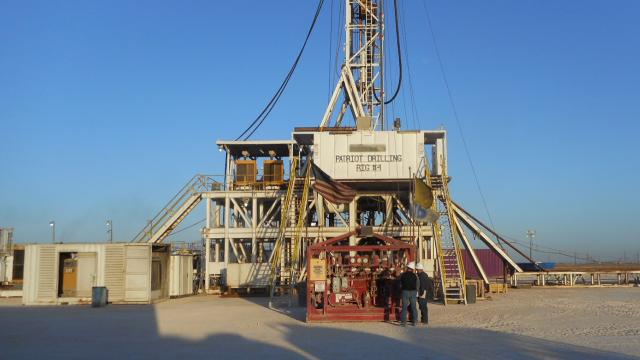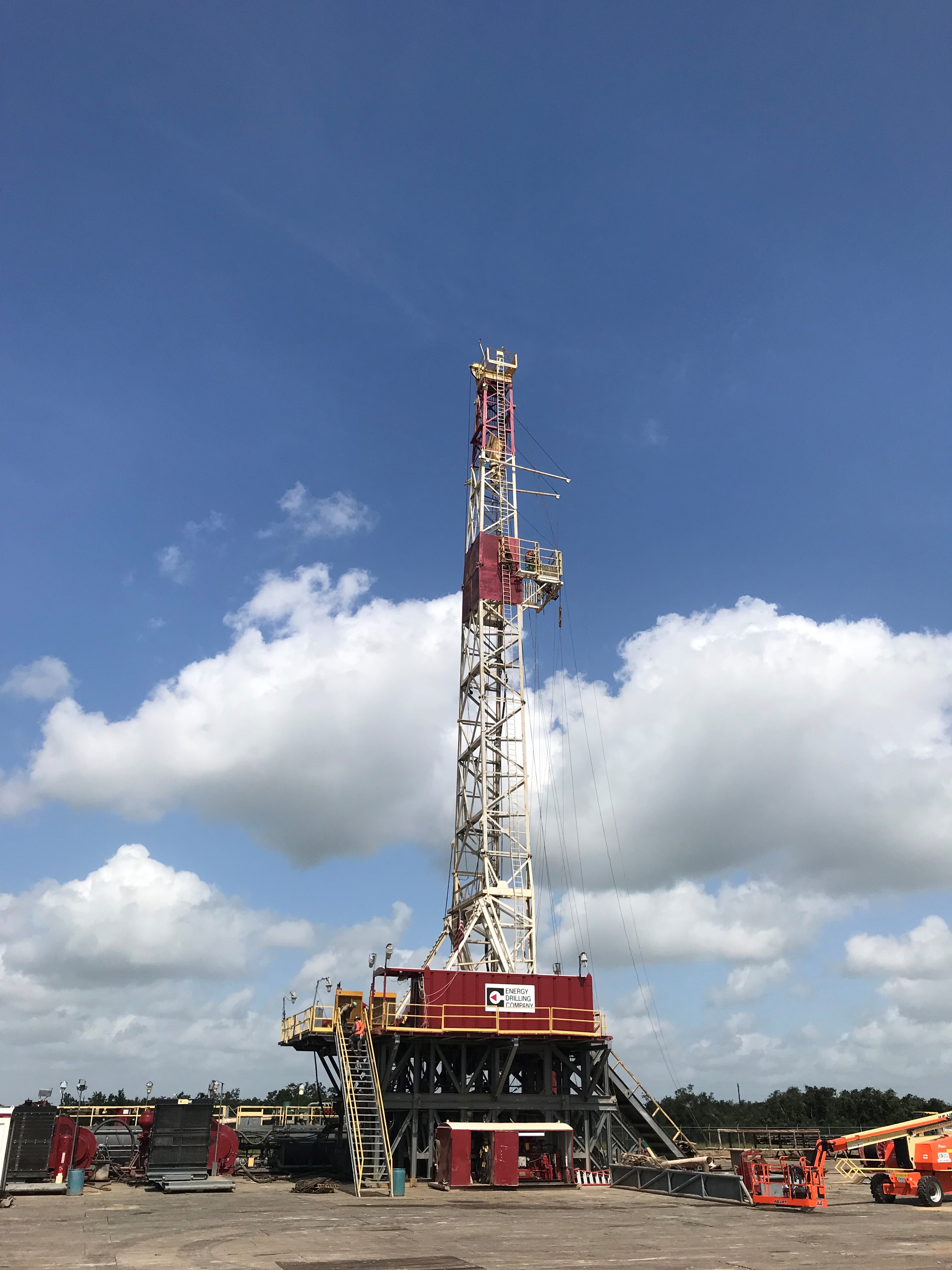
Patriot Rig working in Artesia, N.M.
Safe, approved deep well disposal of fluids are routine in industries such as food processing, specialty chemicals, oil and gas, refining and cavern development. So, it was a very strategic fit for WSP USA in 2012 (Parsons Brinckerhoff Energy Storage Surfaces at the time) to acquire the drilling specialty firm Subsurface. Since then, the expertise in this highly technical field has enabled WSP to zoom to the forefront in design, drilling, completing and maintaining these important assets.
When a client approaches WSP to drill a new injection well, the injection well team swings into action by compiling all of the information they can gather on the proposed new well. The injection fluid properties, maps, geologic data, drilling logs and other information provided by the client can then be processed into a work plan.
“No two wells are alike, so we work closely with each client to clearly define their specific requirements,” said Tim Jones, WSP injection well engineer. “We look for ways to design the well to address drilling risk and save on well cost.”
That philosophy was put into practice on new wells that were drilled and completed recently—one for a specialty chemical company and another for a refinery. The specialty chemical company’s new well was drilled near Port Lavaca, Texas using Energy Rig #12, a rig that was a perfect match for drilling the well to the required total vertical depth. The new well will be used to safely inject spent acid, which eliminates trucking and product handling.

“Our refining client is a long-standing WSP client dating back to the Subsurface days,” Jones said. “We already had a good idea of what they were looking for in the well design, so we had more time with them to discuss rig selection.”
After a thorough sourcing evaluation, Patriot Drilling Rig #4 was selected for the new drill, an Underground Injection Control (UIC) Class I non-hazardous waste disposal well, located in Artesia, New Mexico. Artesia is a city in Eddy County, which is home to the 100,000 barrel per day refinery. The Patriot Rig is large powerful rig capable of drilling deep injection wells—a perfect match for drilling in this region.
Following careful study of client requirements and the subsurface geology, the new UIC Class 1 well was designed as an open hole completion, at a formidable total vertical depth of almost 11,000 feet. The well design was based on a proven design to provide high injectivity with maximum injection interval access, ensuring the well will remain in service for a long time, which is just what the client needed.
WSP was contracted to install the well and installation began in March 2018. According to the well completion report, 20-inch conductor casing was augured to 80 feet below ground level. A 17 1/2-inch hole was drilled to a depth of 1,680 feet and 13 3/8-inch surface casing was set at 1,680 feet below ground level. The casing was cemented to surface with good cement returns to surface. The casing was pressure tested according to New Mexico Oil Conservation Division (NM OCD) requirements.
A 12 1/4-inch diameter hole was drilled to 10,360 feet relative to the kelly bushing elevation (RKB), which is 20 feet above ground level; and 9 5/8-inch protection casing was installed from 10,327 feet RKB to the surface. The casing was cemented with 1,716 cubic feet (306 barrels) of Halliburton premium plus cement from total depth to 6,550 KB. The upper portion of the casing was cemented with 3,092 cubic feet (551 barrels) of Halliburton premium plus cement with good cement returns.
A Weatherford model AS 1-X packer was set in the 9 5/8-inch at 10,265 feet RKB and 10,265 feet of 7-inch, 26 pound per foot, K-55 LT&C was run in the wellbore. The casing annulus was filled with corrosion inhibited heavy brine water and was pressure tested according to NM OCD requirements.
A mechanical integrity test was successfully conducted according to regulatory requirements and consisted of an annulus pressure test and a radioactive tracer survey. NM OCD personnel elected not to witness the radioactive tracer survey. An injection pressure buildup and falloff test were conducted according to guidelines of the NM OCD for Class I nonhazardous waste injection wells.
“The basis for this new well is to efficiently dispose of utility blowdown water,” Jones added.
WSP, with the acquisition of Subsurface, has drilled 45 Class I injection wells and Class II wells, over the last 30 years. For more information on WSP’s Energy expertise, go to https://www.wsp.com/en-US/hubs/energy.

